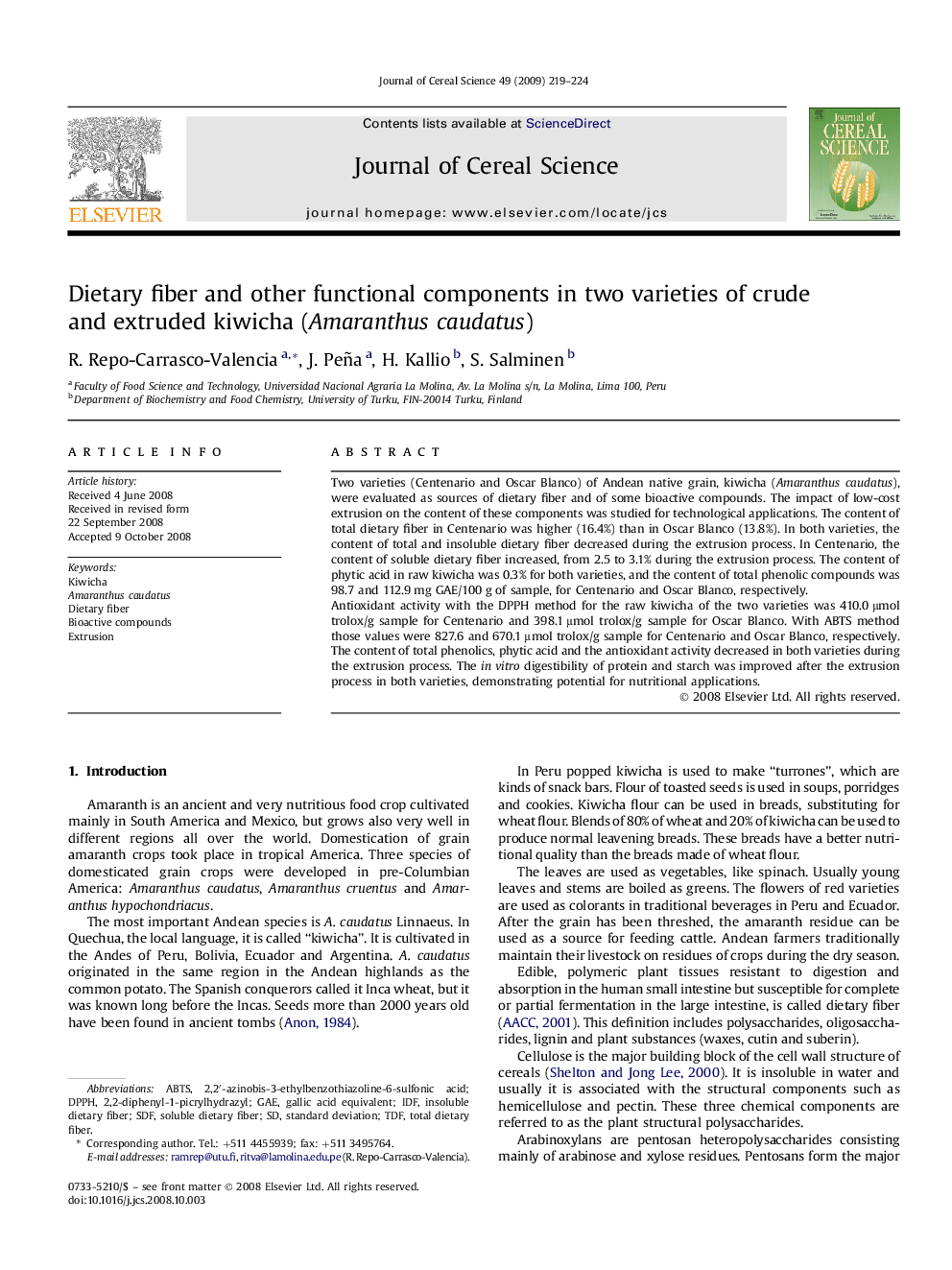| Article ID | Journal | Published Year | Pages | File Type |
|---|---|---|---|---|
| 4516673 | Journal of Cereal Science | 2009 | 6 Pages |
Two varieties (Centenario and Oscar Blanco) of Andean native grain, kiwicha (Amaranthus caudatus), were evaluated as sources of dietary fiber and of some bioactive compounds. The impact of low-cost extrusion on the content of these components was studied for technological applications. The content of total dietary fiber in Centenario was higher (16.4%) than in Oscar Blanco (13.8%). In both varieties, the content of total and insoluble dietary fiber decreased during the extrusion process. In Centenario, the content of soluble dietary fiber increased, from 2.5 to 3.1% during the extrusion process. The content of phytic acid in raw kiwicha was 0.3% for both varieties, and the content of total phenolic compounds was 98.7 and 112.9 mg GAE/100 g of sample, for Centenario and Oscar Blanco, respectively.Antioxidant activity with the DPPH method for the raw kiwicha of the two varieties was 410.0 μmol trolox/g sample for Centenario and 398.1 μmol trolox/g sample for Oscar Blanco. With ABTS method those values were 827.6 and 670.1 μmol trolox/g sample for Centenario and Oscar Blanco, respectively. The content of total phenolics, phytic acid and the antioxidant activity decreased in both varieties during the extrusion process. The in vitro digestibility of protein and starch was improved after the extrusion process in both varieties, demonstrating potential for nutritional applications.
